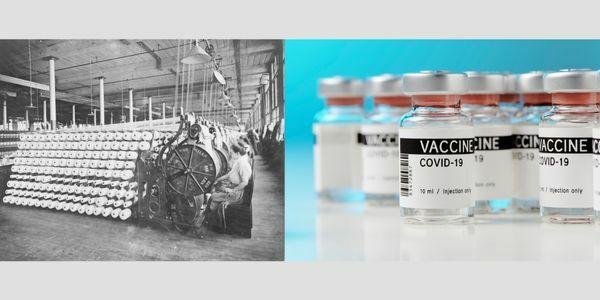Hell's Barge Car is a dramatic text by the Portuguese writer Gil Vicente. In this theatrical work, sinners are forced to board the boat of hell, despite having the false conviction that they deserve a place in heaven. The devil is the driver of this boat, while an angel is in charge of the boat of glory.
The work was written at the beginning of the 16th century and is part of the artistic movement called Hhumanism. Thus, it brings medieval elements, that is, associated with the Catholic religion. But he also values the human aspect of his characters, in a satirical character drama.
Read too: Marília de Dirceu — a Portuguese work set in the late 18th century
Topics of this article
- 1 - Summary about Auto da barca do inferno
-
2 - Analysis of the work Auto da barca do inferno
- → Characters from the work Auto da Barca do Inferno
- → Time of work Auto da barca do inferno
- → Work space Auto da barca do inferno
- → Plot of the work Auto da barca do inferno
- → Characteristics of the Auto da Barca do Inferno work
- 3 - Historical context of Auto da barca do inferno
- 4 - Life of Gil Vicente
Summary about Hell's Barge Car
Portuguese Gil Vicente was born in 1465 and died in 1536.
Hell's Barge Car is the author's most famous play.
It was written at the beginning of the 16th century, in the context of the Renaissance.
The drama, of a humanistic character, presents medieval traits and social satire.
In this work, an angel and the devil drive boats to heaven and hell.
The fool Joane is the only character who gets a place on the glory boat.
Do not stop now... There's more after the publicity ;)
Analysis of the work Hell's Barge Car
→ Characters of the work Hell's Barge Car
Devil
Partner
gentleman
Angel
Eleven
Joane
shoemaker
Friar
brisida
Jewish
Inspector
Attorney
Hanged
Knight
another knight
→ Work time Hell's Barge Car
The work does not indicate the time in which the action takes place. However, by the characteristics of the characters, it is possible to affirm that it shows the context of the time of its creation, that is, the beginning of the 16th century.
→ work space Hell's Barge Car
bank of a river, where two boats are moored.
→ Plot of the work Hell's Barge Car
A gentleman arrives at the river, and the devil calls him to get into his boat.. The nobleman wants to know where she is going. The devil replies that he is going to “the lost island”, to hell. The sinner resists, and the devil urges him to get on board soon. But the nobleman wants to sail on the angel's boat, which is going to paradise.
He tries to convince the divinity that, because he is a nobleman, the boat of paradise (or glory) is appropriate for him. To which the angel replies: “Tyranny cannot be embarked on this divine boat”. Throw in the nobleman's face that he despised "the little ones". Faced with this reality, the condemned he laments and says that while he lived he didn't think hell existed.
He claims he has a “dear lady” who wants to kill herself for him. The devil then reveals that the lady was lying. The nobleman ends up accepting his fate and enters the boat. Then, the onzeneiro (miser) appears and he also refuses to get on the boat of hell, he wants to travel on the boat of paradise. But the angel prevents him from entering.
The onzeneiro expresses the desire to go back to the world to get money and see if the angel will give him passage. The devil loses patience and makes him enter the boat of hell. Then comes Joane the Fool, who goes to the devil and, when he learns that the boat is going to hell, treats him and addresses the angel, who lets the fool into the boat of glory, as it is not malicious and has simplicity.
The shoemaker who deceived many people in life arrives. He tries to reason with the devil, says he heard masses. He goes to the glory boat, but the angel sends him back to the devil. Then a monk appears hand in hand with a girl, who is his lover.. When the friar asks the devil where the boat is going, the devil replies that it is to “that burning fire that you were not afraid of while living”.
The friar is confused, as he believed that the habit protected him from hellish condemnation. Finally, she ends up getting on the boat of hell. Like this, the next convict is a procurer called Brísida Vaz, who is a believer that he is going to paradise, despite having lied and deceived.
She decides to seek the angel's compassion, but he denies her entry as well. After Brísida Vaz boarded the boat from hell, a Jew appears, who offers money to the devil to take a goat with them. He gets to board for free, but on the back of the barge.
An inspector arrives, who marvels that a man of his rank should go to hell. However, in life, he was unfair and accepted bribes. Before the inspector boards, a procurator appears, who also refuses to go to hell. The two then head to the glory boat and try, in vain, to convince the angel that they deserve to go to paradise.
Next to appear is a man who has been hanged, and he also boards the boat of hell. Finally, Four knights who were murdered by the Moors during the Holy War appear. They are sure they are going to heaven, but the devil calls them to his boat. However, according to the angel, they are “martyrs of Mother Church” and therefore deserve “eternal peace”|1|. Then, they are received on the glory boat.
→ Characteristics of the work Hell's Barge Car
the play Hell's Barge Caris not divided into scenes, features only one act, and is written in verses. It is Gil Vicente's most famous work and is part of humanism, an intellectual and artistic movement that presents elements of transition between Middle Ages and the Renaissance.
This Vincentian drama is a social satire and therefore criticizes the society of the time. It has religious and moralizing themes, in order to condemn vices and exalt human virtues. It has a popular character, uses foul language and presents common characters.
See too: Cousin Basilio — a realistic work that criticizes the bourgeois society of the time
historical context of Hell's Barge Car
the play Hell's Barge Car It was written during the reign of D. Manuel I, started in 1495. Therefore, is embedded in the historical context of the Rebirth, although Portugal still suffers from a strong Catholic influence. Thus, Gil Vicente's work still contains medieval traits, but also values the human aspect.
Life of Gil Vicente

Gil Vicente born about 1465, in the Portuguese city of Guimarães. Later, it seems, he worked as a goldsmith. He never studied at a university, but he knew Latin, Spanish, French and Italian. He was a protégé of the Portuguese monarchy, which contributed to his success as a playwright.. The writer died in 1536, in Évora.
Note
|1| VICENTE, Gil. Hell's Barge Car. Rio de Janeiro: BestBolso, 2011.
image credit
[1] Editorial Studio (reproduction)
By Warley Souza
Literature Teacher
Learn what Classicism was and how this movement developed in Europe. Know its characteristics and main works and authors.
Understand the historical context in which the writer Gil Vicente lived. Get to know some details of his life and find out what are the characteristics of his works.
Learn more about the dramatic genre. Know where it came from, learn what its main characteristics and subgenres are, and meet some authors and works.
Know humanism and its characteristics. See which are the main works of humanist authors. Plus, read two sonnets by Francesco Petrarca.
Learn more about the development of Portuguese literature during the Renaissance!
Find out who Luís Vaz de Camões was. He knows the characteristics of his works. Understand why he is one of the most important authors of Portuguese literature.
Read the analysis of the book “Os Lusíadas”. Get to know the characteristics of this work of Portuguese classicism and learn a little about the life of its author, Luís de Camões.



